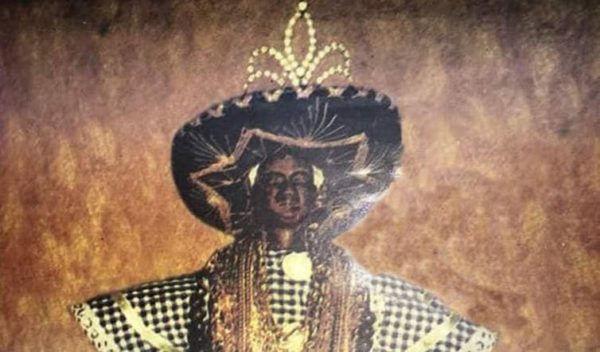I went on a Voodoo pilgrimage in Haiti

A scholar went on a Voodoo pilgrimage in Haiti and learned how an oppressive slave past has shaped its religious present.
In July, hundreds of pilgrims will make their way to an isolated town in the northwest of Haiti, called Anse-à-Foleur or Ansafolè. The journey celebrates a black saint known as Gran’n Sainte Anne Charitable in her European Catholic form and Ti Saint Anne in Voodoo form.
Voodoo, known as “Vodou” in Haiti, is a spirit-based religion. Its followers believe saints carry miraculous powers.
People in search of healing, justice, and prosperity – both Haitians and outsiders – take part in the pilgrimage.
As an anthropology doctoral student interested in religious healing, I went on this Voodoo pilgrimage in 2018 during the saint’s feast day.
This pilgrimage, like other Haitian pilgrimages, brings together Catholic and African practices.
Who is this icon?
The pilgrimage site was created in the early 20th century.
According to local lore, a group of people on their way to the Dominican Republic came across a dark doll-like idol in a strait of water.
The travelers carried the idol to Ansafolè, but discarded there, finding it of no particular value. However, the story goes, the idol reappeared miraculously in the strait where she was initially found.
Not long after, the idol appeared in the dreams of the locals. One local in particular, a businessman named Dédé Mezina, created a space where people would come visit her for a few Haitian gourde. As the idol’s popularity grew, she came to be worshipped as a saint.
Her fame spread as more miracles were attributed to her. Among those was one where she was credited for freeing a rich shipowner who had visited her from prison.
The shipowner built a two-story church in the saint’s honor in the 1930s. Today, this church is the site of the pilgrimage as well as the idol’s resting place. The town itself has come to be associated with the saint.
During my visit, I found that testimonies of the saint’s miracles filled the small prayer houses near the church. Most of all, people believe in her power of healing. Two women in their late fifties told me stories of being healed by the saint.
A saint with two forms?
Going on Voodoo pilgrimages is a practice with African origins tied to the strong belief in the healing power of saints, spirits and God. Pilgrimages are also a way to appeal to higher powers for one’s unfulfilled desires.
This pilgrimage, like many others in Haiti, combines Catholic practices. Catholic prayers are used to bring about transpossession, where Voodoo healers believe they become possessed with African spirits in order to give guidance to the sick.
The population of Haiti is 80% Catholic and 16% Protestant Christian. But there is a common saying as I learned during my visit that Haitians are 100% Voodoo.
The reason for this goes back to Haiti’s slave past. African slaves had to disguise their African gods as Catholic saints in order to avoid punishment by their masters. Over time the Voodoo idols and Catholic saints became one, causing Haiti’s gods to have multiple forms.
For example, African slaves associate the Voodoo god of iron, Ogou, with Saint James because the saint was associated with war and Christian conquest. Another example: Ezili Dantor, a Voodoo goddess, came to be associated with Virgin Mary.
Voodoo continues to play an important social and religious role in Haitian life and in healing its post-slavery past.
[ You’re smart and curious about the world. So are The Conversation’s authors and editors. You can read us daily by subscribing to our newsletter. ]
Guilberly Louissaint, Anthropology Ph.d Student, University of California, Irvine
Este artículo fue publicado originalmente en The Conversation. Lea el original.

